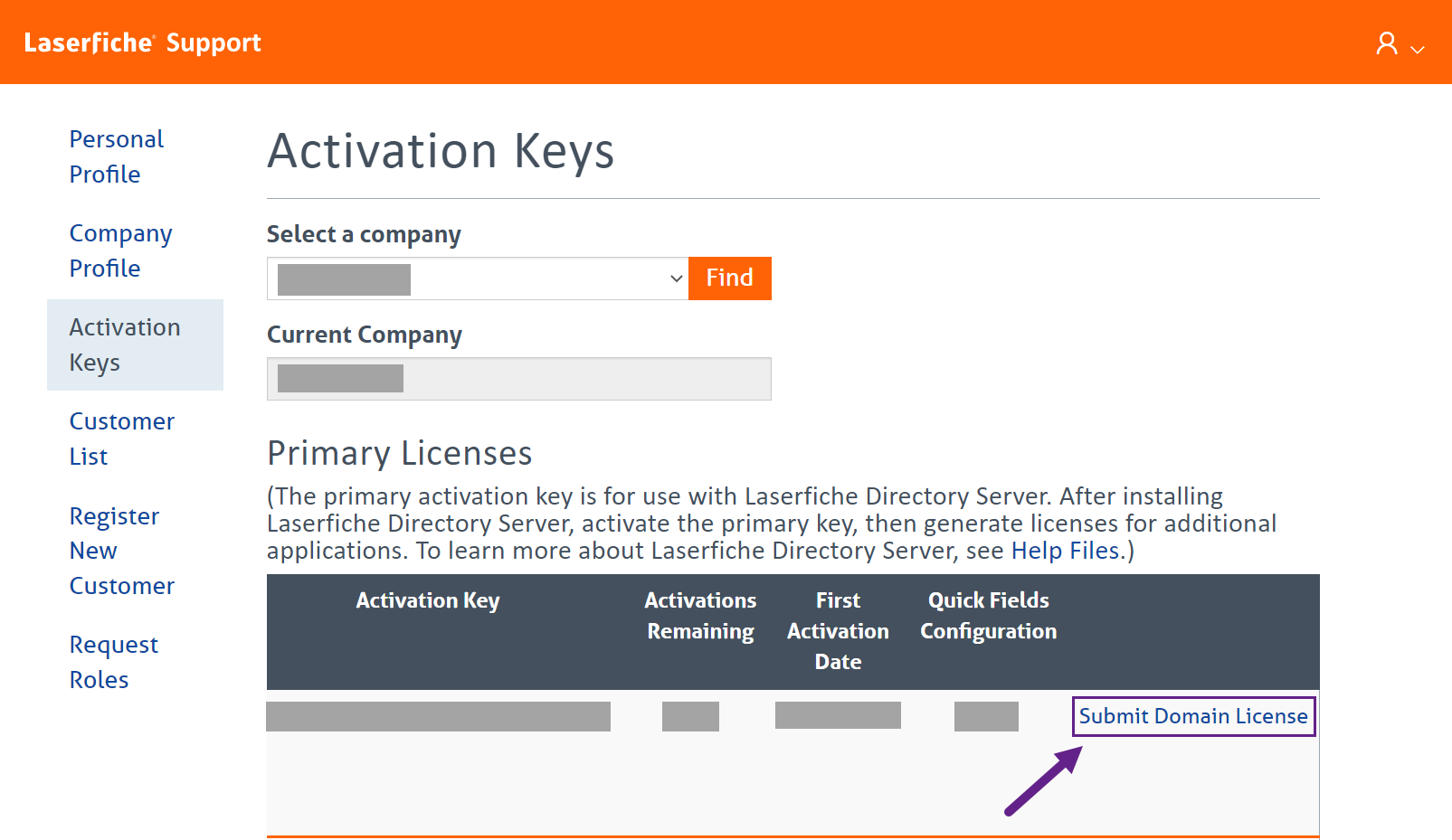Hi Cody,
We recommend customers who use Laserfiche Directory Server (should be everyone now) have their SPs submit a domain license request through the Activation Keys section of the Support site. The link will take you to a request form with a few fields. Submitting it triggers a process that results in automatic approval in most cases.

A Domain License is a no-cost feature added to a Primary License. Once enabled, it allows Laserfiche application license checks to validate against the Active Directory domain(s) of the server(s) hosting the applications, rather than those servers' "hardware fingerprints". Hardware fingerprint validation pre-dates widespread server virtualization and can result in license validation issues if/when virtual machine properties change. Laserfiche recommends all customers running Laserfiche 10.4 and above enable and use a Domain License. Laserfiche Directory Server 10.4.5 and above has the ability to selectively issue hardware fingerprint-based licenses for applications running on DMZ servers that are not joined to any AD domain.
The domain value(s) are used for license checks against the Active Directory domain of the server(s) Laserfiche components are installed on. The domains of any URLs used to access Laserfiche web applications are not involved in this domain license check - only the AD domain(s) servers are joined to.
The process will add both the specified domain (e.g., "example.com") and a wildcard entry covering all subdomains one level down("*.example.com"). If you have a domain with four or more components (e.g., "emea.corp.example.com"), submit either the full subdomain or one level up (e.g., "corp.example.com") so it is covered by the wildcard entry ("*.corp.example.com"). If you have a legitimate need for additional domain entries, please submit another request.
After the domain license request is confirmed, you will need to first Renew the primary license in Laserfiche Directory Server so it picks up the new Domain values, and then re-issue all the individual application licenses as Domain licenses. If you do that before the VMware migration, you're essentially guaranteed to not have any license invalidation issues from the move.